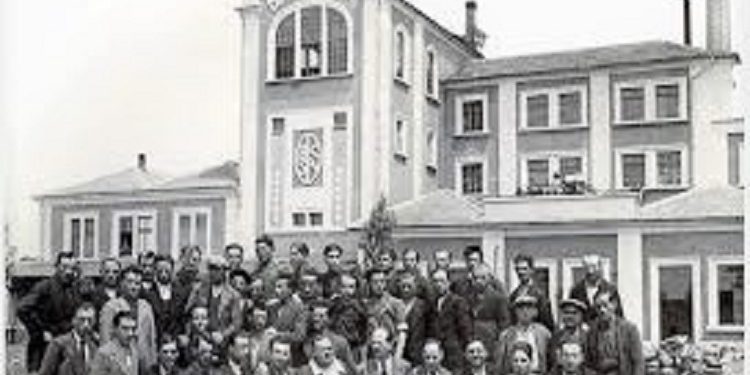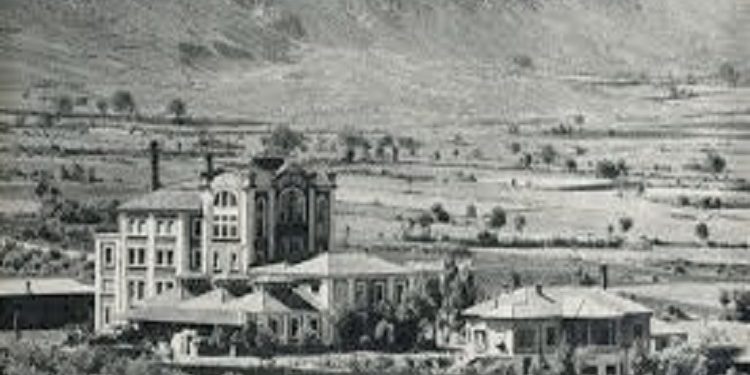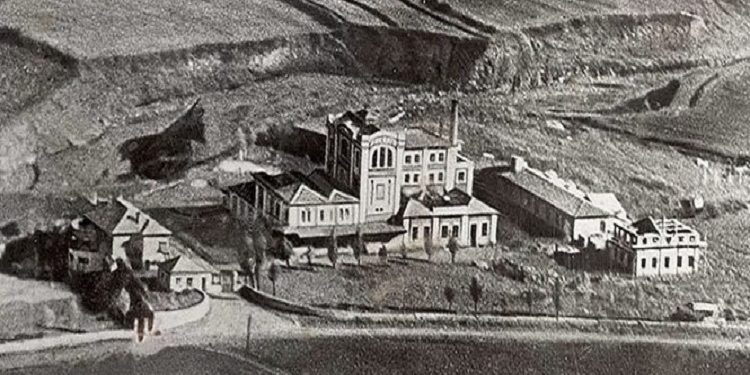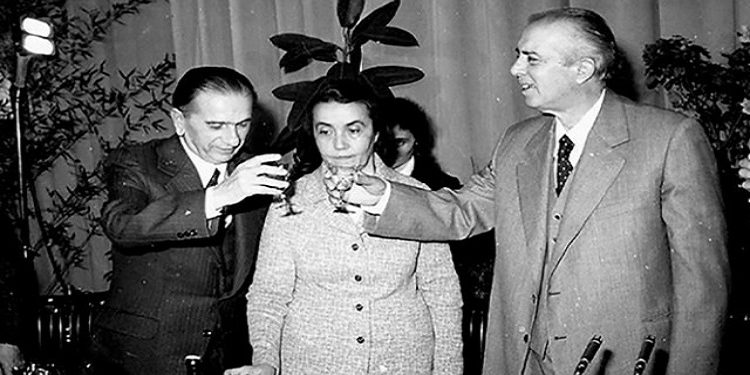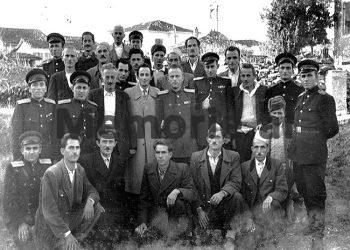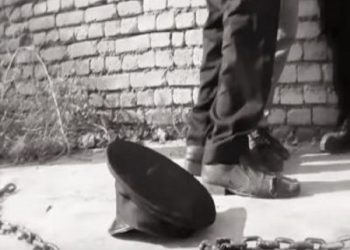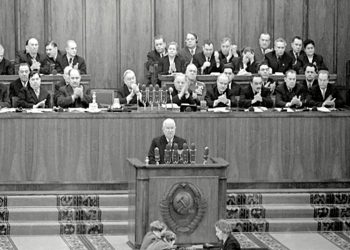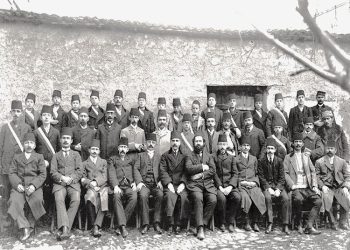Dashnor Kaloçi
Memorie.al publishes some archival documents with the initials “secret” issued by the Central State Archive in Tirana (fund of the former Central Committee of the ALP), which belong to 1963, where there is a correspondence between the Ministry of Trade and Industry, with the Council of Ministers and the Central Committee of the ALP and the Factory “Birra Korça”, regarding the quality and standards for the production of the famous drink, starting from the raw material imported from abroad, the provision of sheet metal for the production of corona bottle caps by the factory located in the city of Korça and the Food Factory “Ali Kelmendi” in Tirana, etc., until the planning for the distribution of production in different cities of the country. The full documents containing the relevant reports regarding the production and distribution of the famous drink “Birra Korça” as well as the concerns raised by the Minister of Trade, Kiço Ngjela and the Minister of Industry, Xhaferr Spahiu, in their letter sent to the Deputy Chairman of the Council of Ministers, Spiro Koleka, Chairman of the State Planning Commission, Koço Theodhosi, member of the Politburo and secretary of the Central Committee of the ALP, Haki Toska, for the problems presented by that much sought after assortment, up to the report of The director of the factory “Birra Korça”, Elise Toshe and the secretary of the basic organization of the party of that factory, Sotir Tushi, who present to the senior management, their three variants, for the production and distribution of beer.
The traditional feast of “Birra Korça”, which started last night in the city of Korça and which takes place for several years in a row, has gathered thousands and thousands of fans of this “magic drink” not only from the city where it was produced for first time in 1928, but also from other cities, not forgetting here and hundreds of foreign tourists who have started to attend that holiday for several years.
But it must be said and accepted that the main “masters” of that symbolic drink, remain the Korçars, which most have “crafts” and inherited from their ancestors, who have enjoyed it for decades. It is not in vain that the famous proverbial expression “for a beer in Korça lives a man” has remained from them, ie from the “craftsmen” of Korça, which they use with great pleasure not only during the holidays.
But also, few of them and even less of the ‘outsiders’ who attend that holiday have knowledge of the history of the factory that produces it since the time of the Bird Monarchy, which was the “godfather” who signed and gave approval for its construction and production. Among the few factories that the communist regime inherited from the Monarchy period, not only did it not close it (as it did occasionally with some other factories or workshops built in that period), but after its nationalization in 1945 and in continuation, took care to maintain and expand it.
Not only that, but the issue of “Birra Korça” has been taken seriously by the highest leaders of the communist regime of Enver Hoxha, starting with the then Prime Minister, Mehmet Shehu; Deputy Prime Ministers Spiro Koleka and Koço Theodhosi, members of the Politburo such as: Haki Toska and Prokop Murra, or ministers such as Kiço Ngjela and Xhafer Spahiu, etc., officials and senior officials of that time. Among other things, this is made known by a number of archival documents, found in the Central State Archive (Fund 14. structure, apparatus of the Central Committee of the ALP), which Memorie.al is publishing in full in this writing.
Of great interest in these documents is the report-information of the director of the State Industrial Enterprise “Birra Korça”, Sotir Tushi, who in 1963, asked the Prime Minister Mehmet Shehu, to make possible the expansion of the production capacity of the factory that he led, as a result of the great demands and needs that the market had for that assortment. Or the insistence of the “frugal” Deputy Prime Minister Spiro Koleka, who did not give approval for the beer caps not to be used more than once.
But all these already belong to the history of a bygone era and for which the “ustallars” from Korça rightly “do not even want to know brother”, because since last night they have gathered and are enjoying with great pleasure that magical drink in the premises and squares of their city.
The report of the Minister of Trade, Kiço Ngjela and that of Industry, Xhaferr Spahiu, sent to the Deputy Prime Minister, Spiro Koleka, and the Chairman of the State Planning Commission, Koço Theodhosi and the Secretary of the Central Committee of the ALP, Haki Toska, regarding the issue of Beer production in Albania
THE PEOPLE’S REPUBLIC OF ALBANIA
MINISTRY OF COMMERCE
MINISTRY OF INDUSTRY
(Social Food Branch)
(Director of Food Industry)
Nr. 98/198 Prot. Nr. 16/48 Prot.
Tirana, on 4.5 1963
Course “On the corona caps of beer bottles and soft drinks”
SHOKUT SPIRO KOLEKA
VICE PRESIDENT OF K. M. R. P. SH.
SHOKUT KOÇO DHEODHOSI,
CHAIRMAN OF THE STATE PLAN COMMISSION
For notification:
SHOKUT HAKI TOSKA
SECRETARY OF THE CENTRAL COMMITTEE OF P.PSH.
Tirana
Being in front of a very preoccupying problem, during 1962 in implementation of the letter No.11 / 148 dated 22.VII.1962 of the Prime Minister “on the collection and processing of corona caps of beer bottles and soft drinks”, by trade bodies, for several times it has been requested to review the above order.
During 1962, we took all measures to implement the order correctly and in fact where it was fully implemented, despite the troubles encountered by both commercial enterprises and industrial enterprises, but practice showed that the implementation of this order, with all the positive aspects of saving tin as an import deficit material, has many negative aspects, as will be explained below, which are more than the positive aspects and the cancellation of its implementation becomes necessary.
By using ‘corona’ and ‘sugero’ corks more than once in beer and soft drink bottles, the quality of the product is severely damaged due to the fact that the seal is not sealed, resulting in gas, which weakens the quality of one on the one hand and on the other hand the beer is fermented, which loses all its characteristics and turns into vinegar, thus losing the beer, which costs 13.61 ALL and lupus, as a raw material that is imported, worth 1.55 ALL, to gain a cork, which costs only 0.92 ALL.
So, as seen as an import material, we do not gain anything, because if we gain the cork, we lose the lupulon, which is again an imported commodity, except for the other substances that make up beer.
From the reuse of corona and sugero caps there is no commercial enterprise that does not have significant quantities of spoiled beer, except for the quantities that have been returned to the industry, which has processed them into vinegar, spending again.
By reusing corona caps, at each batch of beer supplied, a considerable number of bottles come out gas-free or fermented which are served to customers. Such a thing has made on the one hand not to speak well of beer, giving it a bad reputation and on the other hand to create suspicion in consumers and therefore, to consume less beer. We think that this also has a negative impact on the economic side due to the fact that less beer is sold and as a result, we lose the income that provides not only this, but also other items that are sold along with the beer.
In addition to these, the Food Factory “Ali Kelmendi” in Tirana, with its letter No.1 / 172 dated 24. XI. 1962 rightly raises some other negative aspects, which affect both the economic side and the direction of consumer health such as:
a) The efficiency of the ward (using corona caps), decreases to 20-25%.
b) Despite the disinfection and sterilization of the reused corks, again, it is hygienically suspected of their sterilization, after microbes nests are created on the surface and inside.
c) To extend the shelf life of beer, it is sterilized, but by reusing the caps; a good part of this work fails because the corks do not provide an airtight closure. In some cases they leak, especially after the numerous movements that the goods undergo during transport.
d) From the controls in the factory wards, a good part of the soft drinks are returned to the canteen, which leads to a significant increase in cost and a decrease in quality. Considering all these negative sides, we think the above order should be canceled and the corona caps used only once.
If this proposal is accepted, then the State Planning Commission to provide the Ministry of Industry on the contingent planned for 1963 and 36 tons of tins for the production of 14,400,000 pieces of corona corks and 3 million sugero corks.
The Ministry of Health and the Central Union of Koop also agree on the above. Consumption
We reiterate once again that quick orders are given for the problem in the object.
MINISTER OF INDUSTRY
MINISTER OF TRADE
(XHAFERR SPAHIU) (KIÇO NGJELA)
……………………………………………………………………………………………………………………………………
Report of the Director of the Directorate of Industry, Prokop Murra, on the problem of the factory “Birra Korça”
Note.
Regarding the request made by the Ministry of Industry together with the Ministry of Trade for not using more than once the ‘crown’ corks for beer bottles, we talked with the friends of the Prime Minister (with comrade Hysen Bukali) and it turns out that comrade Spiro Koleka, does not agree that they should not be used more than once.
He is of the opinion and will issue an order to appoint a committee with friends from the Ministry of Industry, Trade and the Prime Minister to verify in the country, for a period of one month all the negative aspects that are noted in the joint relationship of the two ministries and then decide definitively on this problem.
DIRECTOR OF INDUSTRY-CONSTRUCTION DIRECTORATE
(Prokop Murra)
Tirana on 23.II.1963
Note
The friends of the Prime Minister have seen this problem and have come to the conclusion that beer caps can be used up to twice. But this has difficulties, because you have to select the ones that have been used once and the ones that have been used over twice.
Therefore, the friends of the Prime Minister are looking at the possibilities of using beer bottle caps in any other job, such as in the production of measures for the Stalin Textile Factory, etc.
- 5. 1963
Report of the director of the Factory “Birra Korça”, Elise Toshi and the secretary of the Party organization, Sotir Tushi, addressed to the Prime Minister Mehmet Shehu, members of the Politburo, Haki Toska and the Minister of Industry, Xhafer Spahiu, on the problems of the factory
POPULAR REPUBLIC E
ALBANIA
I. SH. KORÇE BEER
520 SECRET
KORÇË 12. IX. 1963
Landa: “On the production and distribution of beer”
CHAIRMAN OF THE MINISTERS OF THE REPUBLIC OF ALBANIA
Comrade MEHEMT SHEHU
SECRETARY OF THE CENTRAL COMMITTEE P.P.S ALBANIA
Comrade Haki Toska
MINISTERS OF INDUSTRY
Comrade XHAFER SPAHIU
Tirana
For the third five years the beer plan for our factory is set at 45,000 Hl. for each year. But as in 1961, as well as in 1962, the production plan in this factory has not been fulfilled. Even for the ten months of the following year we have created a deficit of 1,451 Hl. beer.
The normal capacity of the brewery depends mainly on the brewing department. For the conditions of our factory, deducting the time of revision of the machinery of this department and the time required for the prophylactic services of the steam boiler and the cooking aggregates themselves, the nominal capacity of this department reaches up to 46,450 Hl. This amount is calculated for 683 decoctions that should be done normally throughout the year. For a normal use of this capacity and for the rhythmic realization of the production plan, fully responding to the state standard of beer seasoning, we must produce every month about 3.90 Hl. beer.
Practice so far has shown that in our plans, the production of beer for the market has never matched the capacity and realization of the pace of the plan, but from one quarter to another there have been changes. This came from the needs of the market, which in the first and fourth quarters, the demand was very small compared to the second and third quarters. Thus, for example, while in the first quarter of the following year, the boiling capacity was 12,600 hl, in fact 5,930 hl were produced for sale.
So, the capacity in this case is used only about 50%. The same is being done for the fourth quarter, where the production plan is 10,500 hl. But that is hard to accomplish. In previous years, referring to the figures, the same thing probably happened.
Practically for the years 1961, 1962 and the nine months of the following year, the beer is supplemented as follows:
Year 1961 in hl. Plan 45,000 Fact 36,476
Year 1962 in hl. Plan 45,000 Fact 41,981
9 / month of 1963 Plan 34.000 Fact 33.317
As can be seen, in none of the above periods the beer plan was fully realized. The first and fourth quarters mainly influenced here. We also emphasize that every year, in the summer period, the standard in beer seasoning is violated, which has influenced the taste and resistance by having in many cases advertisements from commercial entities.
The ads were for two reasons:
For brewing beer when it has been below standard in aging and 2) for rejecting commercial entities in cold weather, which have not had the opportunity to sell. It is understood that for the first point as we said above, the violation of the standard in the seasoning has come as a result of inconsistency of the production plan in brewing with that of beer distribution. For the ten months of this year from July 15 to October 30, for the reasons we said above we have sold seasoned beer less than 15 days which is the minimum seasoning time, 15,232 hl.
Comparing the figures, on the one hand the production according to the use of the existing capacity of the factory in a rhythmic way and on the other hand, the demands for beer from the consumer entities, there are such proportions, which we with the available capacities cannot answer .
This is mainly because their demands from one quarter to the next have significant differences that do not correspond to the capacity of the factory. For 1963 the production plan that roughly responds to customer demands in the first, second, third and fourth quarters, are respectively from 7,000, 12.5000, 15.000, and 10.500, hl. As can be seen, only in the second quarter does the production plan match the existing capacity, while in the third quarter, it is above the factory capacity. The first and fourth quarters it is understood that capacity is not fully utilized, forcing us to suspend cooking for several whole days.
It should also be said that for the first quarter of this year we did not even fill 7,000 hl. beer that was the plan but only 5,930 hl. Making only 60 stews out of 170 that were planned according to nominal capacity. The same is happening for the fourth quarter, where the production plan, although smaller than the existing capacity, is not realized due to rejections made by commercial entities, forcing us again to suspend the brewing, which in the brewery are basis for completing the plan. We explain here that the suspension of brewing in the first and fourth quarter forces us due to the tight space that exists in the beer aging tanks, which have a maximum capacity of up to 4,900 hl.
As a result of the rejections of commercial entities, which are mainly done in the first and fourth quarter, for this period we have a deficit in the beer distribution plan of 1,594 hl. Below we provide an overview of the implementation of the distribution plan.
An analogous event as above has happened in previous years. Thus, for the first quarter of 1961 from 7,000 hl. beer that was the distribution plan, was completed 6,200., while the fourth quarter from 11,000 was realized 7,561. In 1962 the beer distribution plan for the first quarter was completed 5,624 by 7,000 hl. that was the plan, while the fourth quarter by 11,000. 7,600 hl.
So, only from the comparison of these figures can be seen what anomalies occur in production in an attempt to realize the plan, forcing us to work non-rhythmically, with insufficient manpower for the second and third quarter and completely unused for the quarter first and fourth. This then allows for the damage that can be done to the company by cost overruns, non-performance and many other things related to this problem.
The worst thing about this issue is that many companies because they do not have a sales market, break their beer and then seek with any excuses to avoid the truth that they cannot sell it and then it happens that they return it to us again. Thus, until October 31 of this year, 404 hl were returned to us by commercial enterprises spoiled beer.
This regardless of what the fault is, the fact is that the popular economy is severely damaged, considering in the first place that the raw material of barley used is bread, not considering then the use of many other materials, which are misused. We must say on this occasion that commercial entities do not maintain beer, according to the conditions set by the standard, especially in terms of storage in warehouses at temperatures from 4 to 12 degrees Celsius, this also plays a role in the expiration of beer prematurely.
In view of the above, in order to normalize the production and distribution of beer and to avoid damages that may occur in the future, we intend to take the following measures according to these variants:
The first variant
With the existing capacity to reduce the annual plan by 45,000 hl. at 40,000 hl. with a breakdown into quarters:
The first 6,000 hl., The second 13,000 hl., The third 13,000. hl and the fourth 8,000 hl. It should be said that this division does not fully correspond to the rhythmic realization of the plan and the normal use of capacity, since as seen from one quarter to another there are changes, but it is nevertheless much more positive than the division of the plan of 45,000 hl. which exists today and fits more realistically to the requirements of commercial entities. This division does not violate the standard of beer in seasoning.
The second variant
Here we intend to increase the capacity of the cooking unit by expansion. This will allow the narrow spot that exists in the brewing to disappear in the summer time (when beer demands are high), with the seasoning department. It is understood that in the first quarter and partly in the fourth this increase will not be used, but will meet the needs of the second and third quarter. For this variant we think the plan is 45,000 hl. The difference of 5,000 hl. compared to the first variant is added to the second and third quarter. This variant, commissioned by the fellow minister, we are studying and preparing the project that we will soon submit for approval.
The third variant
This variant consists in increasing the aging capacity by means of expansion. For this problem with perspective from our side have begun studies.
For 1964, we intend to implement the first variant, i.e. reduce the production plan by 45,000 hl. at 40,000 hl. In this year to start implementing the second variant by expanding the brewing and at the end of it in 1965 to implement the second variant, planning the production of beer 45,000 hl. The implementation of these two variants will ensure that the standard of beer in seasoning is not violated.
On the above, please take into account our remarks and for 1964, the production plan be set at 40,000 hl. This will allow normal conditions of beer production and sale and eliminate damages.
Attached we are sending you an overview on the amount of beer returned by commercial entities. /Memorie.al
SECRETARY OF THE PARTY ORGANIZATION DIRECTOR OF THE ENTERPRISE
(Elise Toshi) (Sotir Tushi)




